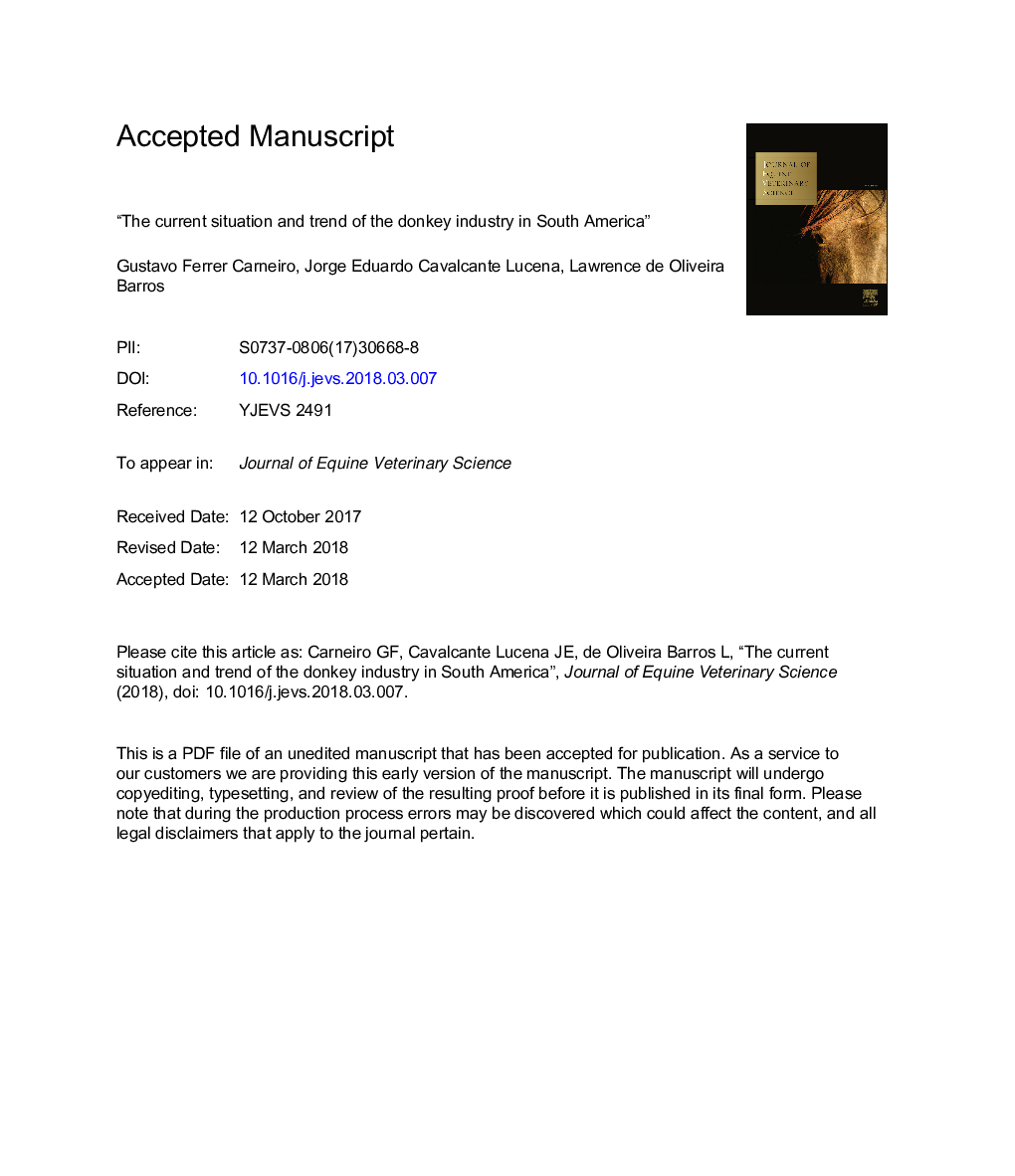| کد مقاله | کد نشریه | سال انتشار | مقاله انگلیسی | نسخه تمام متن |
|---|---|---|---|---|
| 8483087 | 1551535 | 2018 | 16 صفحه PDF | دانلود رایگان |
عنوان انگلیسی مقاله ISI
The Current Situation and Trend of the Donkey Industry in South America
ترجمه فارسی عنوان
وضعیت فعلی و روند صنعت خر در آمریکای جنوبی
دانلود مقاله + سفارش ترجمه
دانلود مقاله ISI انگلیسی
رایگان برای ایرانیان
کلمات کلیدی
خر تولید، تنوع ژنتیکی،
موضوعات مرتبط
علوم زیستی و بیوفناوری
علوم کشاورزی و بیولوژیک
علوم دامی و جانورشناسی
چکیده انگلیسی
Donkey husbandry in South America is related to a social, cultural, economic, and ecological heritage. Its use is mainly based on agriculture but is also important in human feeding, production of hybrids, and transportation. Mechanization of the agricultural sector may cause concern as the decrease in a number of these animals can result in a loss of genetic variability of the species, restricting the ability of adaptation and evolution of this species. With the largest herd of these animals in South America, Brazil hosts three types of donkeys brought from Europe or Africa which are recognized as (1) Northeast (Ecotype) donkey, a class of highly rustic animals adapted to the adverse conditions of the Brazilian semiarid region; (2) Brazilian donkey, brought from Italy, with a close genetic relationship to African donkeys; and (3) Pêga Donkey of Iberian origin, a special type of donkey developed mainly in the state of Minas Gerais for use in the mining industry. There are also researches performed in biotechnology for production of gate donkeys, such as artificial insemination and embryo transfer using mules and mares as recipients. In the meat business, an abattoir for donkeys has been recently built in the northeast region with capacity to slaughter 500 donkeys a day to export skin and meat to China. There are also projects to produce donkey milk but still on a small scale or at research level. All of these aspects have substantially changed the current situation of the donkey industry in South America in this new century.
ناشر
Database: Elsevier - ScienceDirect (ساینس دایرکت)
Journal: Journal of Equine Veterinary Science - Volume 65, June 2018, Pages 106-110
Journal: Journal of Equine Veterinary Science - Volume 65, June 2018, Pages 106-110
نویسندگان
Gustavo Ferrer Carneiro, Jorge Eduardo Cavalcante Lucena, Lawrence de Oliveira Barros,
